The Library of Consciousness
of Consciousness
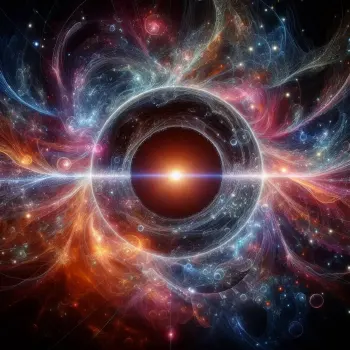
This moment is the most complex moment the universe has ever known—at least the local universe.
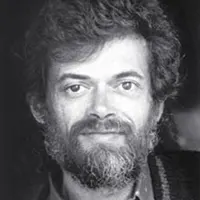
1995

The Omega Point is a spiritual concept originated by Pierre Teilhard de Chardin, a French idealist philosopher and Jesuit priest. He envisioned the Omega Point as the ultimate maximum level of complexity and consciousness towards which he believed the universe was evolving. Ethnobotanist Terence McKenna often referred to it as the “transcendental object at the end of time.”
Teilhard argued that the universe is becoming gradually more ordered and complex, and that this complexification increases consciousness. He viewed cosmic evolution as progressing towards ever higher levels of consciousness and argued there must be a final end point or goal—which he named the Omega Point. He saw it as a transcendent cosmic entity of pure consciousness, a unity of space and time, matter and spirit, encompassing all that exists as part of one divine superconsciousness. While not strictly identical with the traditional Christian conception of God, Teilhard saw this supermind at the end of evolution as transcendent, self-aware, and omniscient—similar to God in many respects.
The Omega Point theory has influenced New Age spiritual ideas as well as some interpretations of Christianity, though Teilhard’s teachings were controversial in his lifetime. While scientifically speculative in nature, the idea of an evolving cosmic consciousness remains an intriguing philosophical and spiritual concept.
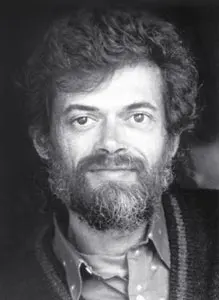
A Few Conclusions About Life
In his signature wide-ranging style, McKenna explores culture, shamanism, psychedelics, and humanity's collective journey through spacetime. He advocates embracing the ineffable mystery unfolding through us, moving toward a hyperspatial cyberculture. To rediscover our shared humanity, we must trust the transformative wisdom of psychedelic plants.

A Great Event Foreshadowed
The Planetization of Mankind
Teilhard explores the rise of the masses and the socialization of humanity. He predicts a future Earth where human consciousness evolves to its peak, achieving a maximum of complexity and unity through a process of “planetization,” and argues that collective unity is not a threat but a path to personalization and humanization. As we head towards an interconnected world, he challenges us to embrace a sense of evolution and celebrate our shared destiny.

A Note on Progress
A cosmic battle rages between those who proclaim “We are moving!” and the immobilists who insist “Nothing changes.” Pierre Teilhard de Chardin passionately argues that the universe progresses through mankind’s collective evolution of consciousness. For him, Christianity’s future lies in recognizing this biological genesis unfolding—the cosmos physically realizing its psychic fulfillment through humanity striving to form one united Body of Christ.

A Psychedelic Point of View
Buck the status quo! Rebel philosopher Terence McKenna shook things up in this closing speech after a month of being scholar-in-residence at Esalen, arguing that reality escapes our rational grasp. He chided science and philosophy's paltry models that diminish nature's infinitude. Seeking to spur his audience from passive acceptance, McKenna called to revere expanded consciousness. He urged toppling the assumptions bolstering dominator culture to midwife more liberated, psychedelically-attuned societies. By trusting our intuition's cosmic tether, we can transform reality into something stranger and more wonderful than we suppose.

Appreciating Imagination
Join Terence McKenna in this weekend workshop as he takes us on an imaginative journey into the depths of human creativity. He explores psychedelics, virtual worlds, and shamanic states of consciousness, saying how an embrace of our imagination allows us to envision and manifest alternate realities beyond cultural conditioning. By cultivating our creative faculties with mathematical reasoning, intuition, and immersion in nature, he guides us toward transcending ideological limits into an enlightened future of compassion. Ultimately, breaking boundaries through the power of imagination will inspire us to reach new heights of understanding and connectivity.
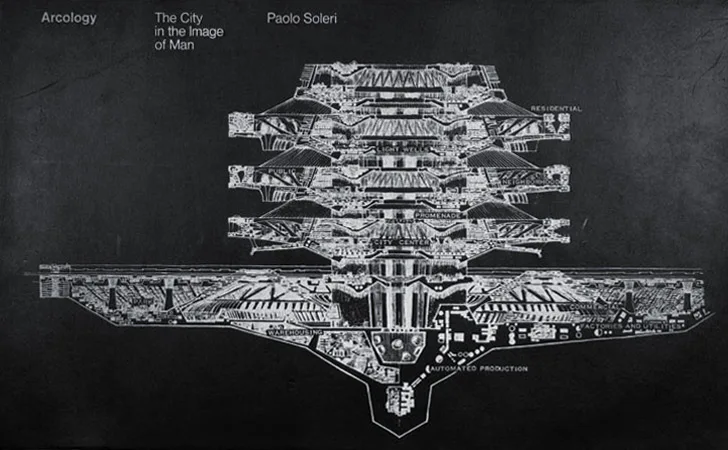
Arcology
The City In The Image Of Man
Visionary architect Paolo Soleri challenges us to think of cities as biological entities with his concept of the arcology—a massive, self-sustaining, urban “organism of a thousand minds” designed to exist in harmony with nature. He proposes that the purpose of life is aesthetogenesis: the universe progressively complexifying itself into compassionate, beautiful structures. Soleri showcases 30 potential arcologies through incredibly detailed diagrams, explaining how each integrates itself economically and ecologically into the world and fulfills his aesthetogenic criteria. The scope of his vision ranges from cities designed to span canyons or float on the oceans to cube-shaped metropolises suspended on pillars, and even a space habitat. While comprehensive, Soleri's focus lies primarily on realizing arcologies that meet humanity's moral imperative for sustainable urban living.

Awakening to Archaic Values
A weekend workshop in which Terence encourages humanity to return to harmonic habits which have been lost in the tide of time.

Big Historical Foundations for Deep Future Speculations
Cosmic Evolution, Atechnogenesis, and Technocultural Civilization
Big historians are attempting to construct a general holistic narrative of human origins enabling an approach to studying the emergence of complexity, the relation between evolutionary processes, and the modern context of human experience and actions. In this paper Cadell Last attempts to explore the past and future of cosmic evolution within a big historical foundation characterized by physical, biological, and cultural eras of change. From this analysis he offers a model of the human future that includes an addition and/or reinterpretation of technological singularity theory with a new theory of biocultural evolution focused on the potential birth of technological life: the theory of atechnogenesis. Furthermore, he explores the potential deep futures of technological life and extrapolates towards two hypothetical versions of an “Omega Civilization:” expansion and compression.
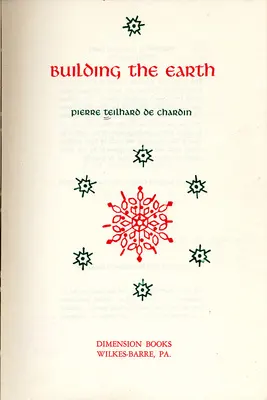
Building The Earth
A visionary and hopeful book on humanity's future relationship to the planet from which it arose, Teilhard outlines a new psychological state of awareness in which individual humans unite into planetary Personhood. Paragraphs are arranged in verse and interspersed with delicate graphic illustrations.

Centrology
An Essay in a Dialectic of Union
Teilhard proposes a guiding hidden rule present in the universe, leading everything from simplicity to complexity and consciousness. He suggests that as cosmic particles evolve, they become more complex and conscious, ultimately converging toward a unifying Omega point. This vision offers a fresh perspective on the universe, blending science and philosophy to reveal a grand, interconnected cosmic journey.

Cosmic Life
Teilhard de Chardin seeks to harmonize his ardent faith with a boundless love for the cosmos. He finds solace in the belief that the incarnation unites all. Thus, surrendering oneself to the cosmic forces and gently guiding them towards good enables all beings to participate in softly unfolding a new era of harmony. Cosmic Life was the first of Teilhard’s extant writings in his characteristic style. Knowing what risks he was exposed to at the warfront, he wrote it as his intellectual testament, and it contains in embryo all that was later to be developed in his thought; the “fire in his vision” which he tried to communicate.

Countdown Into Complexity
Briefing for a Descent Into Novelty
At his weekend workshop Terence led attendees on an intellectual odyssey traversing psychedelics, virtual reality, technology, culture, spirituality, and the evolution of novelty over time. Blending philosophy, futurology, and mysticism, he explored humanity's relationship with nature and machines, challenging participants to think critically, create freely, and keep an open mind. The goal was to expand consciousness and uncover deeper truths about existence.

Eros and the Eschaton
What Science Forgot: The Importance of Human Beings
Delivered in Kane Hall at the University of Washington, Terence points out the universe's peculiar tendency to seek out complexity and novelty, and that humanity seems to be the focal point of this process.

Having Archaic and Eating it Too
Feeding back to the psychedelic community of Los Angeles, Terence McKenna delivers colorful and astounding visual transformations. He weaves a galactic tapestry of art-tickled articulations of the history and future of psychedelic alchemy, the government/culture clash, and the surging general ordering of chaos from UFOs to archaic shamanism. This recording will amuse anyone interested in subjects ranging from eco-tourism to techno-junkies.

Hominization
Introduction to a Scientific Study of the Phenomenon of Man
In one of his earliest writings on the topic, Teilhard de Chardin explores humanity’s unique place in evolution. He argues that humans represent an entirely new phase of life on Earth—the noosphere, or sphere of conscious thought. While physically similar to other primates, humans are revolutionary in their ability to use tools, form global connections, and reflect on their own existence. This self-awareness comes with both great power and great risk, as humans can choose to either advance or resist evolution’s push toward greater consciousness and unity.

Hot Concepts and Melting Edges
A weekend workshop held at Esalen, with the alternate titles of Deeper and Broader Questions and Eros, Chaos, and Meaning's Edge.

How May We Conceive And Hope That Human Unanimization Will Be Realized On Earth?
Amid the depressing spectacle of human chaos, Teilhard sees glimmers of hope for unanimity. Geographic crowding and intellectual cross-pollination compress us, while deeper forces of attraction pull us together—a rekindled sense of shared species-destiny, and for some, a longing for a “universal lover” at the apex of cosmic evolution to which all egos could converge. Might such planetary energies of compression and gravitational yearning ultimately triumph over our instincts for dispersal? Teilhard dares to envision an inexorable trajectory toward an “Omega” unifying human consciousness.

In Search of the Original Tree of Knowledge
Terence shares his “Stoned Ape” theory—that psilocybin mushrooms drove human evolution by enhancing cognition and fostering social cohesion. He explores psychedelics’ power to dissolve the ego, open the Gaian mind, and guide us towards transcendence. McKenna also delves into the fractals of time, the Santa Claus-Amanita connection, and the radical implications of his Timewave Zero theory. A captivating look at psychedelics, consciousness, and the mysteries of the universe!

In the Valley of Novelty
Journeying through multiple dimensions of psychedelic consciousness, Terence McKenna's visionary weekend workshop invites us on an entheogenic voyage to the frontiers of the mind and its imminent conquering of matter. Blending scientific insights with shamanic wisdom, McKenna argues that natural plant medicines like psilocybin and DMT provide portals into mystical realms and alien dimensions, catalyzing revelations about nature, reality, and the human psyche. He urges us to courageously explore these consciousness-expanding substances, seeking the gratuitous beauty and truths they unveil. For McKenna, the psychedelic experience holds secrets to our world and ourselves—if only we dare lift the veil.

Interview with John Hazard
Terence McKenna describes Novelty Theory to director John Hazard with an elaboration of its core principles involving hyper-complexification and the compression of time. He holds forth on the correspondences between the structure of the DNA molecule and the Chinese I-Ching, then shows how his notion of an archaic revival leads from the theories of mind and the art movements of the early twentieth century to the shaman as the quintessential figure of the twenty-first century, with psychedelic substances being the bridge between these worldviews.
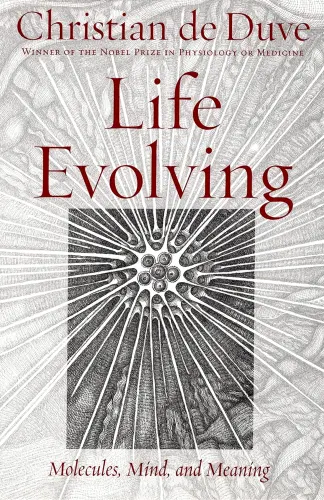
Life Evolving
Molecules, Mind, and Meaning
Christian de Duve, a Nobel Prize-winning biologist, takes readers on a journey through the biological world, from the tiniest cells to the future of life. He argues that life was bound to arise and discusses the evolution of humans, consciousness, language, science, emotion, morality, altruism, and love. De Duve concludes by speculating on humanity's future, including the possibility of evolving into a new species, and shares his thoughts on God and immortality. This wise and humane book sums up his learnings about life and our place in the universe.

Life and the Planets
Pierre Teilhard de Chardin explores the concept of complexification in the universe, focusing on the ever-increasing combination of smaller elements into larger structures, and then extrapolates this behavior to humanity's current situation. What if the human species is an intermediary evolutionary stage, and what would the next rung on the ladder look like? Teilhard suggests that it will involve the merging-together of all humanity into a divine, planetized consciousness.

Limits of Art and Edges of Science
Terence McKenna proposes a radical view of history as a self-limiting process, driven by an attractor pulling us toward a transcendent, alien encounter that will transform human experience. He advocates the transformative power of psychedelics to unlock our collective potential, urging a forced evolution of language and consciousness to navigate the looming collapse of civilization and embrace the cosmic destiny of our species.

Linear Societies and Nonlinear Drugs
Speaking on the first day of the 1999 Palenque Entheobotany Conference at the Chan Kha Hotel, Terence McKenna probes the mind-blowing philosophical revelations of psychedelics. He contends these consciousness-expanding substances can shatter Western rationality, unveiling mystical realities beyond mainstream paradigms. Psychedelics may hold the key to reimagining society's connection with nature and technology. McKenna passionately argues these drugs can catalyze new ways of thinking, fueling an intellectual revolution to change the world.
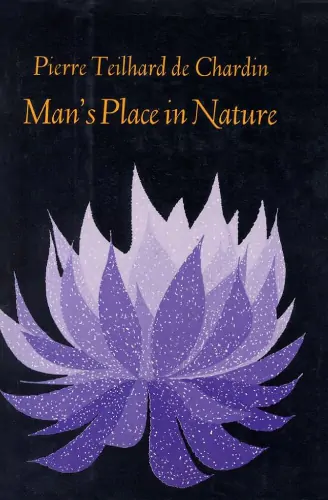
Man's Place in Nature
The Human Zoological Group
In this book Teilhard expounds the evolutionary history of the Earth, the arrival of the human species, and its destiny in the far future. He identifies certain threads of recurrence in evolution's past, and uses these laws of recurrence to project the most probable future destiny of the planet. Teilhard's ingenious conclusion is that evolution is in fact involuting on itself, meaning that the future (like the past) is one of convergence and synthesis, heading towards a single unity he calls the Omega Point.

Nature Loves Complexity
Terence argues that psychedelics reconnect us to archaic values like community, reverence for nature, and direct felt experience. He sees psychedelics as part of nature's tendency to conserve complexity and novelty. McKenna critiques science's misapplication of probability theory and suggests time itself fluctuates, finally proposing an ethics of aligning with nature's creative unfolding.
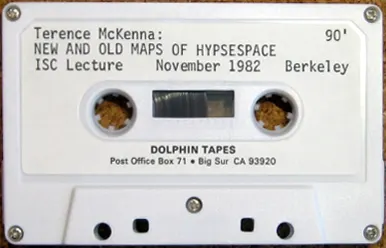
New and Old Maps of Hyperspace
Beyond perception's veil lies a hidden reality accessible through sacred plants. At the Institute for the Study of Consciousness, McKenna describes fantastical tryptamine journeys to alien dimensions, encounters with self-transforming machine elves, and the Overmind behind reality. These shamanic technologies induce total revelation, ecstatic communion, even our apocalyptic transcendence. McKenna demands science and religion gaze again into psychedelic infinity’s abyss where something mysteriously beckons.

Our Cyberspiritual Future
Terence holds court on our civilization's journey toward the eschaton at this weekend Esalen gathering. He riffs on topics from psychedelic states and alien intelligences to time travel and VR. McKenna argues we're evolving toward an unimaginable state of accelerating novelty, propelled by advancing technology. A mind-expanding ride for the open-minded psychonaut or armchair traveler, guided by one of the twentieth century's most eclectic thinkers.
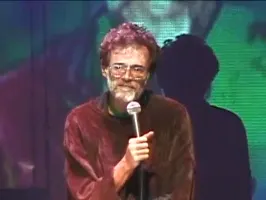
Psychedelics in the Age of Intelligent Machines
Humanity is metamorphosing through the synergy of psychedelics and machines, transcending biological constraints to become a galactic, immortal intelligencia. Print defined our ego boundaries, but electronic media and plant allies are dissolving those illusions. Merging with superintelligent AIs, we’ll birth an alchemical singularity—a spiritual, universe-taming mind born from techno-shamanic ecstasy. History crumbles as novelty’s virus engulfs the old operating systems, unleashing our wildest potentials. The felt presence of boundless experience awaits!

Reflection of Energy
Teilhard de Chardin sees human reflection as an evolutionary force escaping entropy's grasp. Emerging from life's intrinsic complexity, reflection leads mankind on an irreversible journey of deepening interiority. Through convergence and collective self-reflection, we approach a sacred point of supreme arrangement and unity. Teilhard argues that to fully encompass life's mystery in science, the reflection of energy must join conservation and dissipation as key principles. Understanding reflection's role illuminates both human destiny and the cosmos' underlying divinity.

Reflection on the Compression of Mankind
In this compressed world, humanity feels the squeeze. But despair not! This pressure cooker of co-reflection may be evolution's secret recipe for elevating consciousness. As we rub elbows and neurons, a tantalizing possibility emerges on the horizon: a cosmic convergence of minds, a "conspiration" of monads. Will this psychic attraction be our salvation, harmonizing the restless billions? The thinking earth must choose: chaotic crush or convergent release. Intriguing times ahead!

Simulation, Consciousness, Existence
Like organisms evolved in gentle tide pools, who migrate to freezing oceans or steaming jungles by developing metabolisms, mechanisms, and behaviors workable in those harsher and vaster environments, our descendants, able to change their representations at will, may develop means to venture far from the comfortable realms we consider reality into arbitrarily strange worlds. Their techniques will be as meaningless to us as bicycles are to fish, but perhaps we can stretch our common-sense-hobbled imaginations enough to peer a short distance into this odd territory.
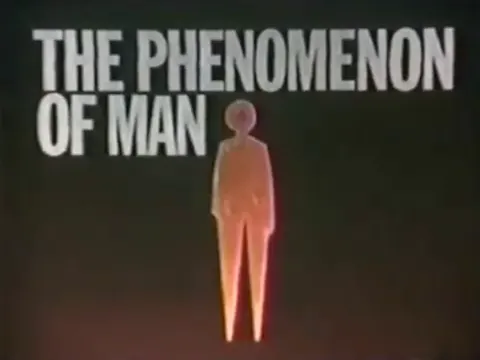
Survival
Teilhard de Chardin's book, The Phenomenon of Man, reinterpreted in a visual format to illustrate the complex topics covered therein.
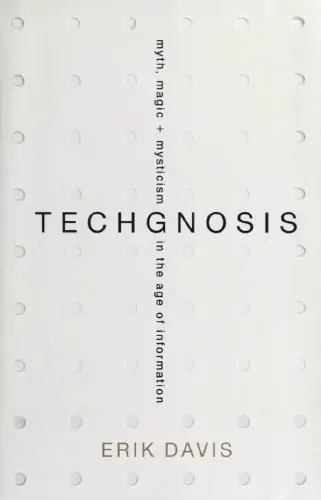
TechGnosis
Myth, Magic, and Mysticism in the Age of Information
How does our fascination with technology intersect with the religious imagination? While the realms of the digital and the spiritual may seem worlds apart, esoteric and religious impulses have in fact always permeated (and sometimes inspired) technological communication. Erik Davis uncovers startling connections between such seemingly disparate topics as electricity and alchemy; online role-playing games and religious and occult practices; virtual reality and gnostic mythology; programming languages and Kabbalah. The final chapters address the apocalyptic dreams that haunt technology, providing vital historical context as well as new ways to think about a future defined by the mutant intermingling of mind and machine, nightmare and fantasy.
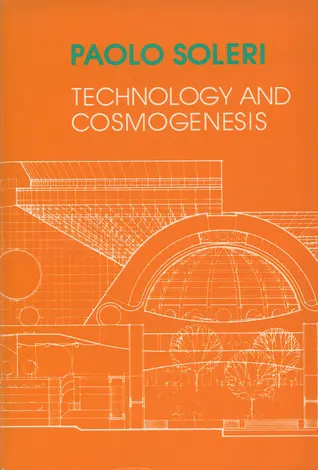
Technology and Cosmogenesis
A hopeful antidote to the destruction of man's environment caused by technology divorced from spirituality. Paolo Soleri, the renowned architect, urban planner, process philosopher and alchemist of the new spirituality of science and technology, challenges us to let go of our absolutized views of human life and creation. By this release, he holds that we can be healed by a cosmos in the process of becoming divine.
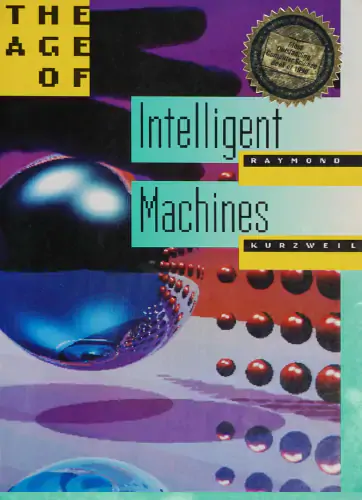
The Age of Intelligent Machines
Inventor and visionary computer scientist Ray Kurzweil probes the past, present, and future of artificial intelligence, from its earliest philosophical and mathematical roots to tantalizing glimpses of 21st-century machines with superior intelligence and truly prodigious speed and memory. Generously illustrated and easily accessible to the nonspecialist, this book provides the background needed for a full understanding of the enormous scientific potential represented by intelligent machines as well as their equally profound philosophic, economic, and social implications.
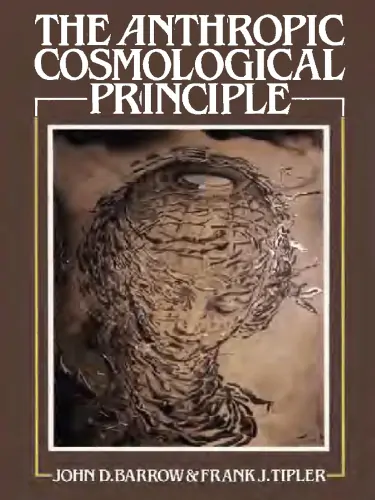
The Anthropic Cosmological Principle
Since Copernicus, science has moved humanity from the center of Creation. However, The Anthropic Cosmological Principle suggests that intelligent observers determine the Universe’s structure. Its radical form asserts that intelligent life must emerge and never die out. Cosmologists John Barrow and Frank Tipler explore the Principle’s implications, from the definition of life to quantum theory. Covering fields like philosophy and astrophysics, this work connects the existence of life with the vast cosmos, engaging a broad audience.

The Atomism of Spirit
Teilhard de Chardin argues that human plurality mirrors the multiplicity of atoms and stars. Just as matter progresses in complexity from subatomic particles to living cells, so consciousness evolves through increasing unification, culminating in the “Omega point”—supreme consciousness and union.

The Birth of a New Humanity
Terence McKenna explored themes of accelerating complexity, impending radical shifts in human reality, and the continuity between our changing relationship with Earth and a new cosmic modality transcending our fragile ecosystem. He posited history as a self-limiting 25,000-year process reaching its climax, suggesting individual acts of “midwifery” can ease this epochal transition. He also cautioned about combining psychoactive compounds without proper expertise.
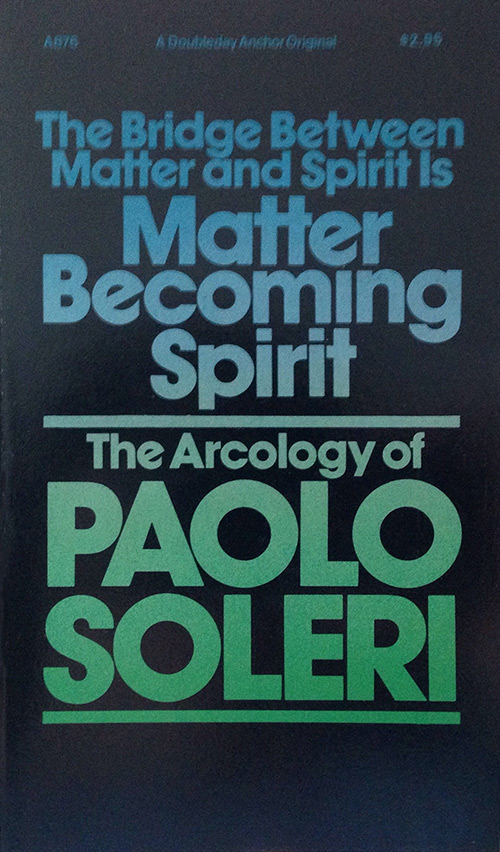
The Bridge Between Matter And Spirit is Matter Becoming Spirit
The Arcology of Paolo Soleri
This volume brings together the essays of Paolo Soleri in which he sets forth his philosophy of arcology (architecture ecology) and pleads for a new stage in the evolution of human society—a move toward compactness, or miniaturization, of our cities. To do so we must build solids rather than veneers; we must flee from a “flat” cityscape that debilitates and suppresses the individual. Arcologies, three dimensional macrostructures, are for populations of thousands or of millions.
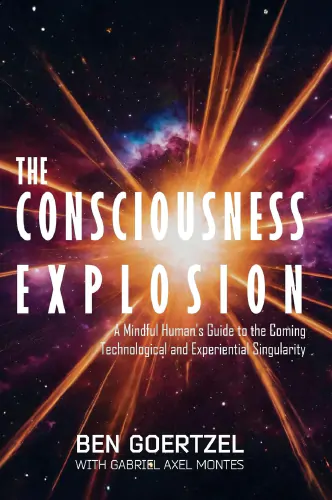
The Consciousness Explosion
A Mindful Human's Guide to the Coming Technological and Experiential Singularity
The pace of engineering and science is speeding up, rapidly leading us toward a technological Singularity—a point in time when superintelligent machines achieve and improve so much so fast, traditional humans can no longer operate at the forefront. However, if all goes well, human beings may still flourish greatly in their own ways in this unprecedented era. If humanity is going to not only survive but prosper as the Singularity unfolds, we will need to understand that the Technological Singularity is an Experiential Singularity as well, and rapidly evolve not only our technology but our level of compassion, ethics and consciousness. Great for curious and open-minded readers who want to wrap their brains around these dramatic emerging changes and empower themselves with tools to adapt and thrive.

The Convergence of the Universe
In examining cosmic drift, Teilhard illuminates humankind's role in the universe's inexorable convergence. We stand at an evolutionary precipice, our dawning self-reflection nurturing new heights of consciousness. To embrace this transformation, we must unite, reassess our core values, and pursue collective actualization. Teilhard's vision beckons us to become active participants in cosmogenesis, threads consciously weaving the tapestry of existence. His ideas challenge us to forge an enlightened path, infinite possibilities awaiting our cosmic citizenship.

The Directions and Conditions of the Future
Teilhard de Chardin envisions human evolution as a purposeful journey guided by three intertwined trends: a natural push toward global unity, technological advances that expand our capabilities, and a deepening of reflective consciousness. Yet, he warns that without a genuine inner cohesion—rooted in love and mutual understanding—these forces may lead to a cold, mechanized future. In his view, our destiny is not random but a guided ascent toward a higher, more meaningful collective awareness.

The Edge Runner
A presentation revolving around the question: what is going on in the universe? Special emphasis is given to the human condition, the accelerating complexification of the cosmos, and options for the human collectivity as it faces the future.

The Formation of the Noösphere
A Biological Interpretation of Human History
The noösphere is the sum-total of mental activity which emerges out of a complex biosphere, and in this essay Teilhard describes how our planet is growing its very own mind.
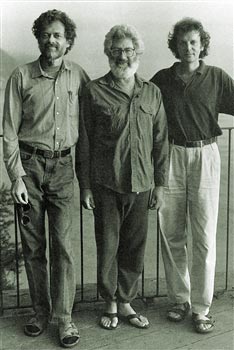
The Future of Humanity
McKenna, Abraham, and biologist Rupert Sheldrake contemplate humanity's bumpy ride towards transcendence. McKenna unveils his theory of an impending "eschaton" when history will culminate in a boundary-erasing recovery of unity, fulfilling religious anticipation. However, approaching this "zero point" will be increasingly chaotic. Abraham and Sheldrake greet McKenna's vision with skepticism tinged with hope. Probing global crises, the trio spiritedly grapple with miraculous visions for transforming society, from psychedelic revival to empowering women. Their speculative voyage reveals turbulence ahead, yet yields glimmers of our journey's destination.

The Grand Option
Teilhard explores the choices facing humanity as it undergoes the process of socialization, and examines four paths: pessimism, optimism with withdrawal, individualistic pluralism, and convergent unity. He argues for the path of convergent unity, where socialization leads not to loss of individuality but to differentiation and personalization within a unifying whole, fulfilling humanity’s evolutionary trajectory toward higher consciousness.

The Human Rebound of Evolution and its Consequences
This essay follows Teilhard's train of thought on the aftermath of a potential fusing-together of humanity.

The Omega Point as Eschaton
Answers to Pannenberg's Questions for Scientists
Frank Tipler presents an outline of the Omega Point theory, which is a model for an omnipresent, omniscient, omnipotent, evolving, personal God who is both transcendent to spacetime and immanent in it, and who exists necessarily. The model is a falsifiable physical theory, deriving its key concepts not from any religious tradition but from modern physical cosmology and computer science; from scientific materialism rather than revelation. Four testable predictions of the model are given. The theory assumes that thinking is a purely physical process of the brain, and that personality dies with the brain. Nevertheless, he shows that the Omega Point theory suggests a future universal resurrection of the dead very similar to the one predicted in the Judeo-Christian-Islamic tradition. The notions of “grace” and the “beatific vision” appear naturally in the model.
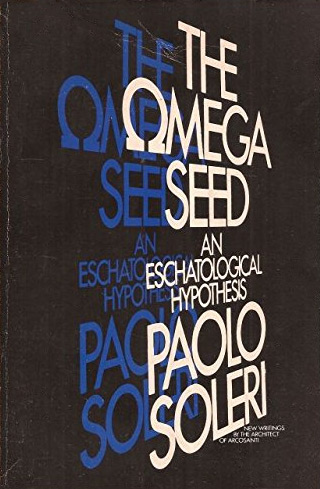
The Omega Seed
An Eschatological Hypothesis
The Ωmega Seed brings together Paolo Soleri’s writings on eschatology, that branch of theology concerned with the final events in the history of the world or of mankind. Soleri believes that the simulation of the divine will provide man with a blueprint for creation not only of our physical environment but also of a new stage in the evolution of mankind. His work is against the things of a materialistic society, toward a redesigning of the urban civilization of Earth.
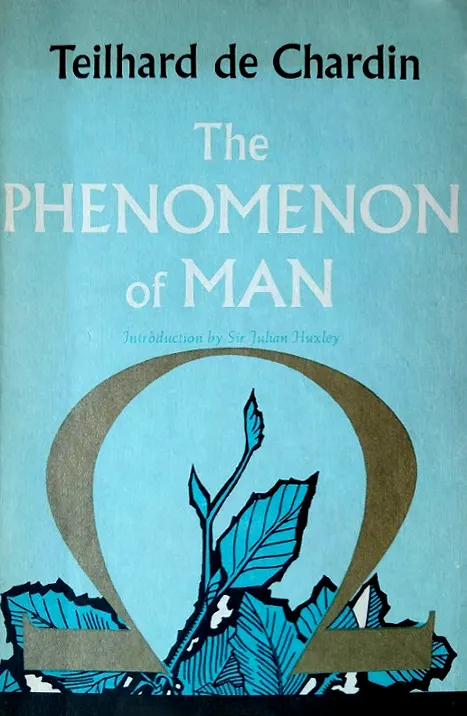
The Phenomenon of Man
Visionary theologian and evolutionary theorist Pierre Teilhard de Chardin applied his whole life, his tremendous intellect, and his great spiritual faith to building a philosophy that would reconcile religion with the scientific theory of evolution. In this timeless book (whose original French title better translates to “The Human Phenomenon”), Teilhard argues that just as living organisms sprung from inorganic matter and evolved into ever more complex thinking beings, humans are evolving toward an “omega point”—defined by Teilhard as a convergence with the Divine.

The Primacy of Direct Experience
In this, the closing session of a June 1994 workshop, Terence McKenna tells us directly what he thinks this human life is actually about: the primacy of direct experience; a focus on the present-at-hand.
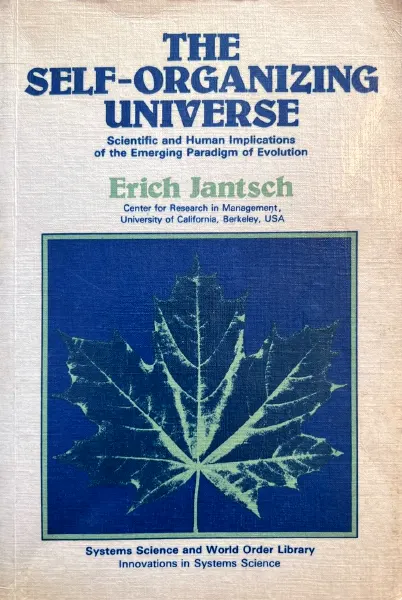
The Self-Organizing Universe
Scientific and Human Implications of the Emerging Paradigm of Evolution
The evolution of the universe—ranging from cosmic and biological to sociocultural evolution—is viewed in terms of the unifying paradigm of self-organization. The contours of this paradigm emerge from the synthesis of a number of important concepts, and provide a scientific foundation to a new world-view which emphasizes process over structure, nonequilibrium over equilibrium, evolution over permanency, and individual creativity over collective stabilization. The book, with its emphasis on the interaction of microstructures with the entire biosphere, ecosystems etc., and on how micro- and macrocosmos mutually create the conditions for their further evolution, provides a comprehensive framework for a deeper understanding of human creativity in a time of transition.
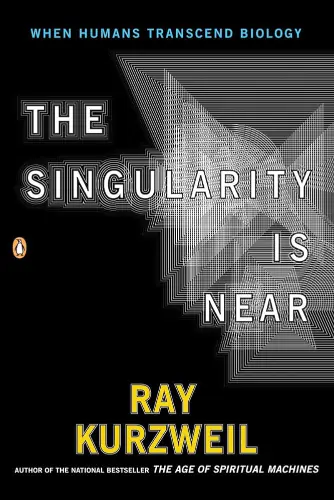
The Singularity is Near
When Humans Transcend Biology
Ray Kurzweil predicts a future where artificial intelligence surpasses human intelligence, triggering an era of rapid technological growth. He argues that advancements in AI, nanotechnology, and biotechnology will merge humans with machines, leading to superintelligent beings and even digital immortality. This "Singularity," expected by the mid-21st century, will radically transform society, solving problems like disease and aging while raising profound ethical questions. Kurzweil’s vision is bold, controversial, and thrilling—painting a future where humans evolve beyond biology itself.

The Syntax of Psychedelic Time
Terence McKenna weaves a tapestry of ideas exploring fractal time, the psychedelic mushroom's potent voice, and humanity's impending transcendence into a galactic, post-biological singularity. Brace yourself for a journey through the uncharted realms of novelty and consciousness expansion.

The Transformation and Continuation in Man of the Mechanism of Evolution
How does humanity fit into evolution's arc? Teilhard de Chardin argues that we represent not an endpoint, but an intensification of evolution's complexity and consciousness. As technology and social bonds grow, he sees not disaster but hope—perhaps mankind is evolving toward an “ultra-hominization,” a perfected global mind.

The World and its Double
This workshop, held at the Nature Friends Lodge, revolves around how psychedelics dissolve boundaries, connect us to the transcendental, and reveal the novel realities underlying our perceived mundane existence. Terence explores how shamanic techniques give access to higher dimensions of consciousness, and describes history as an ever-accelerating process approaching an eschatological transformation or singularity.

Toward the End of History
“We are transcending ourselves faster than we realize:” Terence McKenna explores his theory of novelty, psychedelics as catalysts for cognitive evolution, and the internet’s potential to disrupt power structures and empower marginalized communities. He paints a tantalizing picture of humanity’s inevitable leap into a transcendent future.

Unfolding the Stone
Making and Unmaking History and Language
Also published under the title Empowering Hope in Dark Times, McKenna explores the philosophical underpinnings of alchemy and Hermeticism. He argues that these esoteric traditions promote the inherent divinity of humankind and the overcoming of fate through magic. Psychedelic plants and mystical experiences are positioned as means of glimpsing liberatory truths. McKenna ultimately seeks to empower his audience with a hopeful worldview and a sense of human potential, even in difficult times.

Universalization and Union
An Attempt at Clarification
Teilhard examines the tumultuous state of humanity during World War II, proposing a cosmic perspective on our collective destiny. He argues that beneath the chaos lies a grand process of universal synthesis, driven by increasing complexity and consciousness. He sees the war as a critical point in human evolution, heralding the emergence of a global consciousness. Despite apparent divisions, Teilhard envisions a convergence of ideologies towards a unified, personalized humanity. He urges all to embrace universalism, believing this path will lead to mutual understanding and ultimate unity.